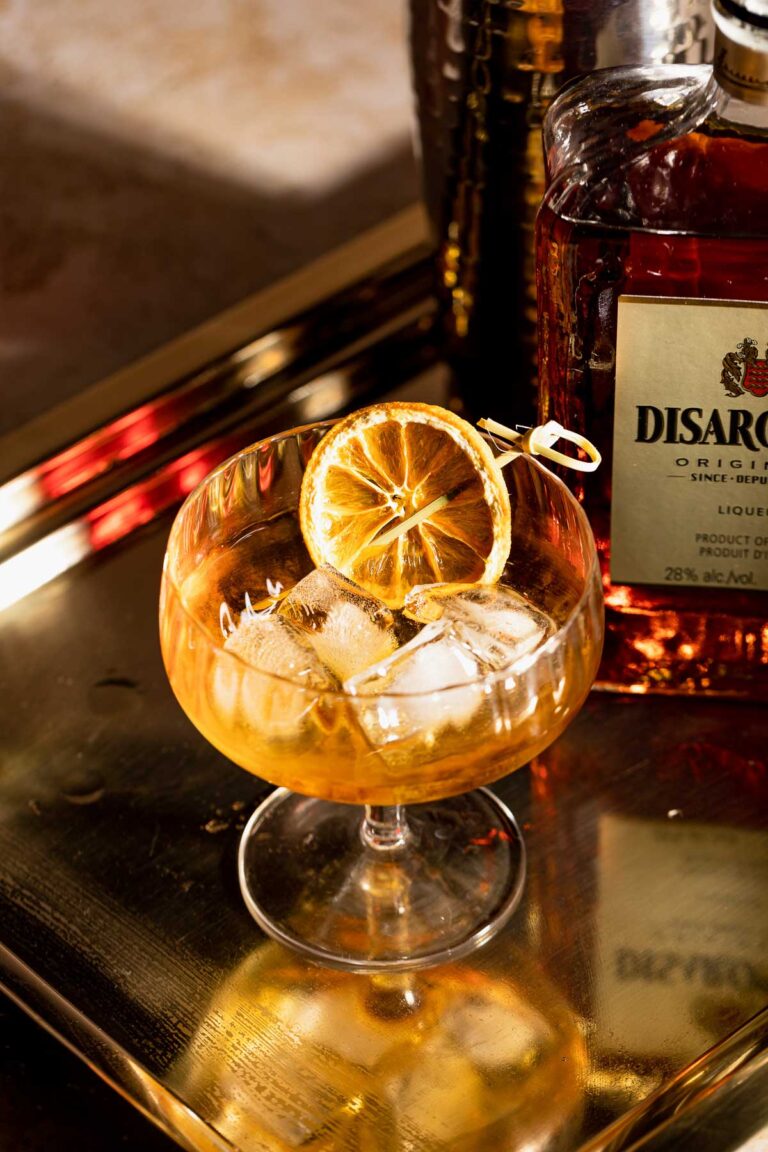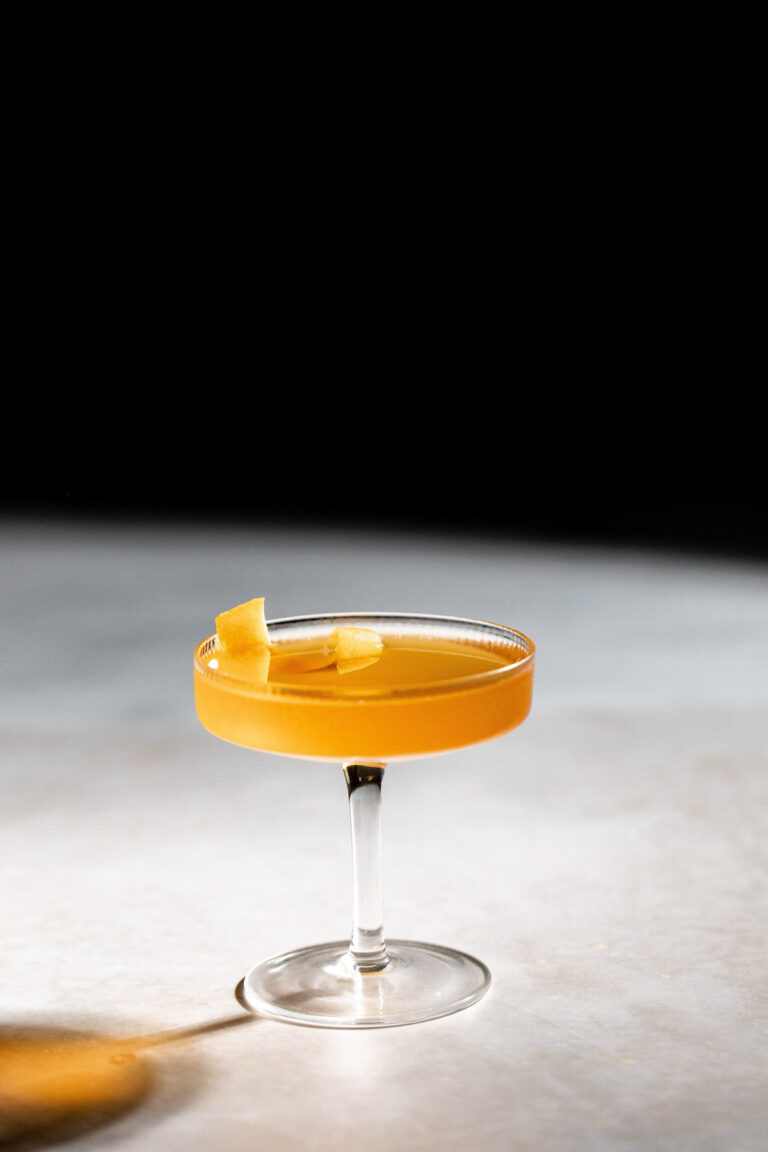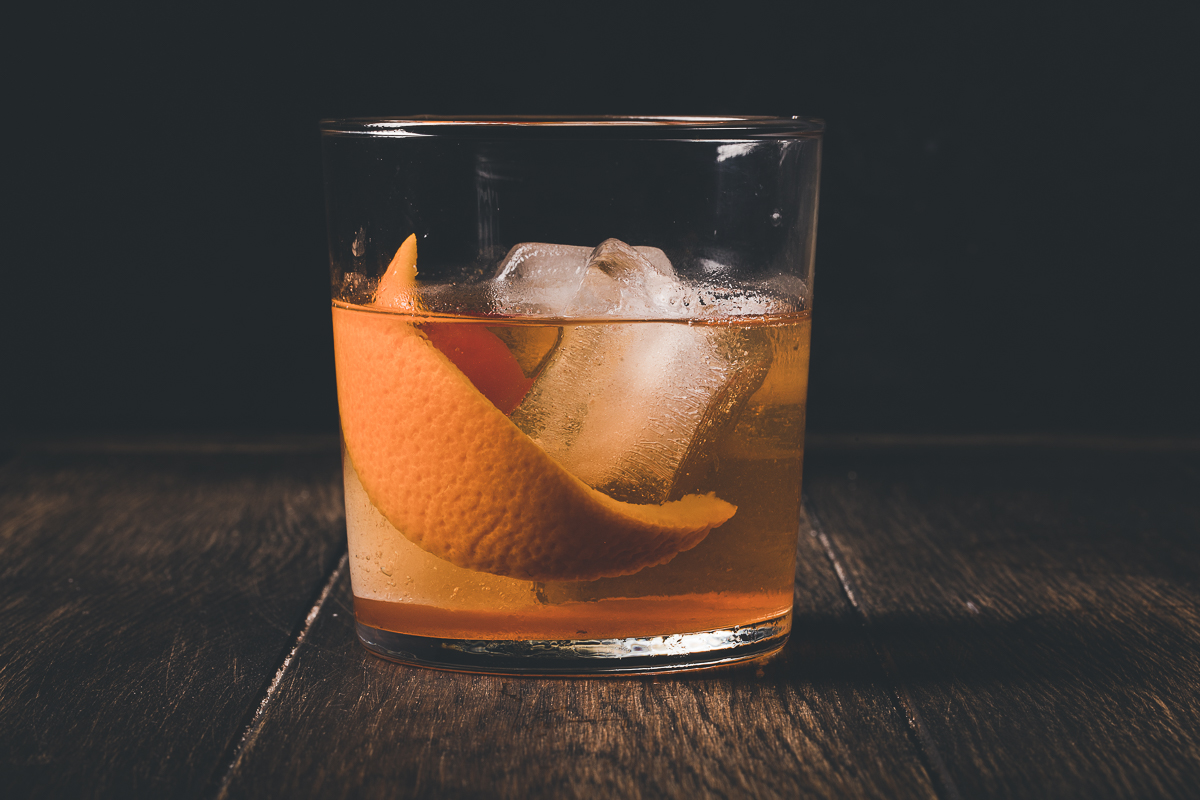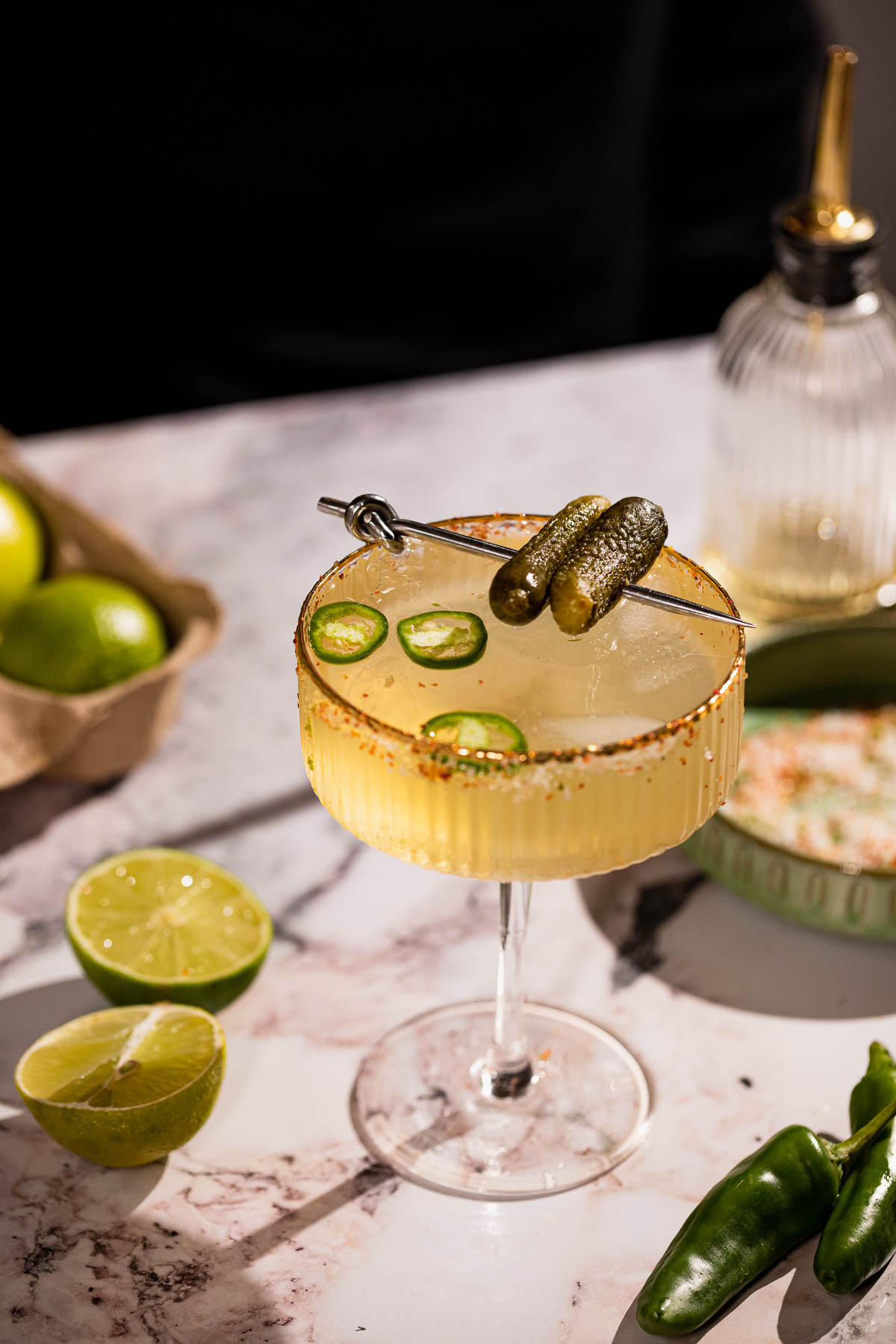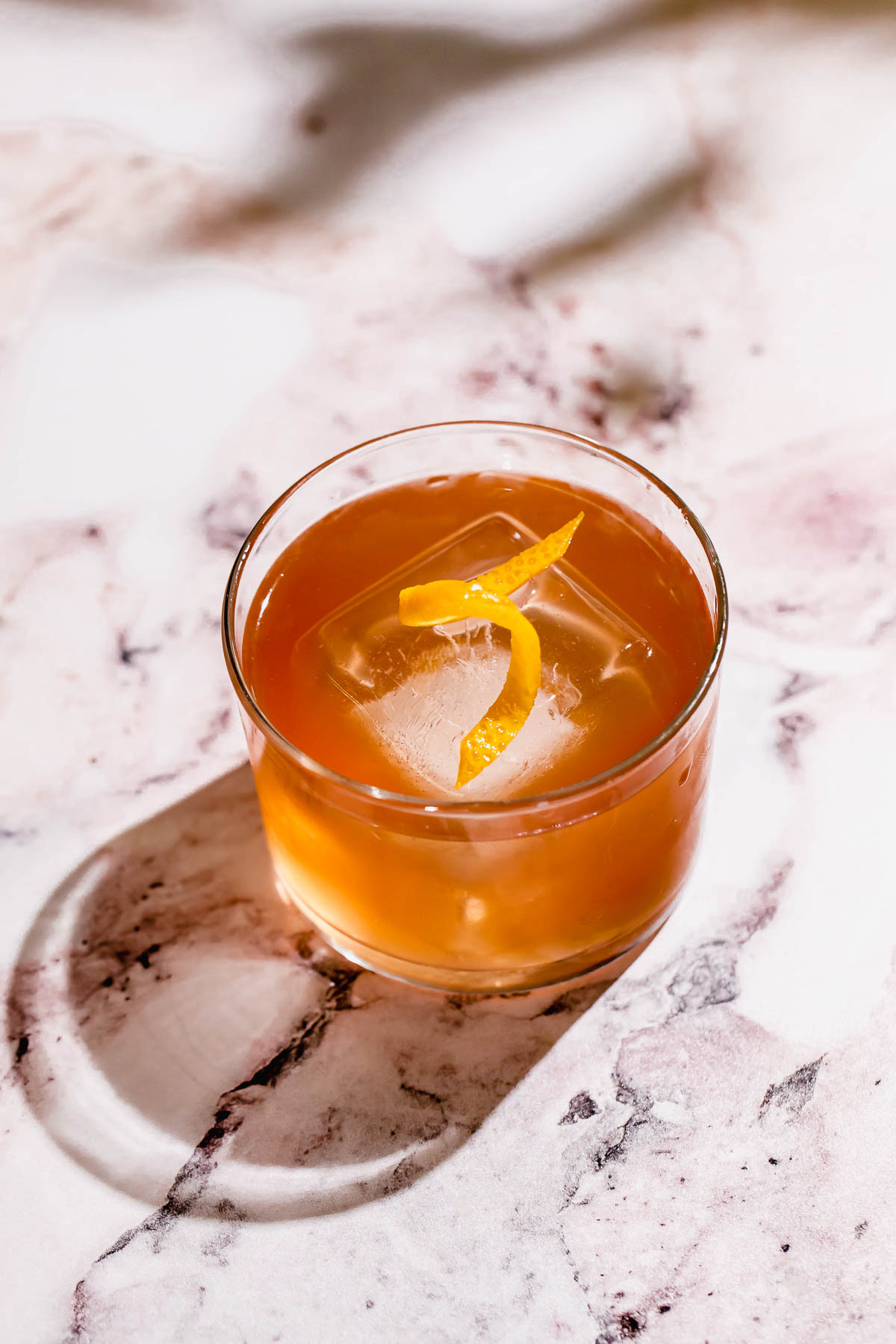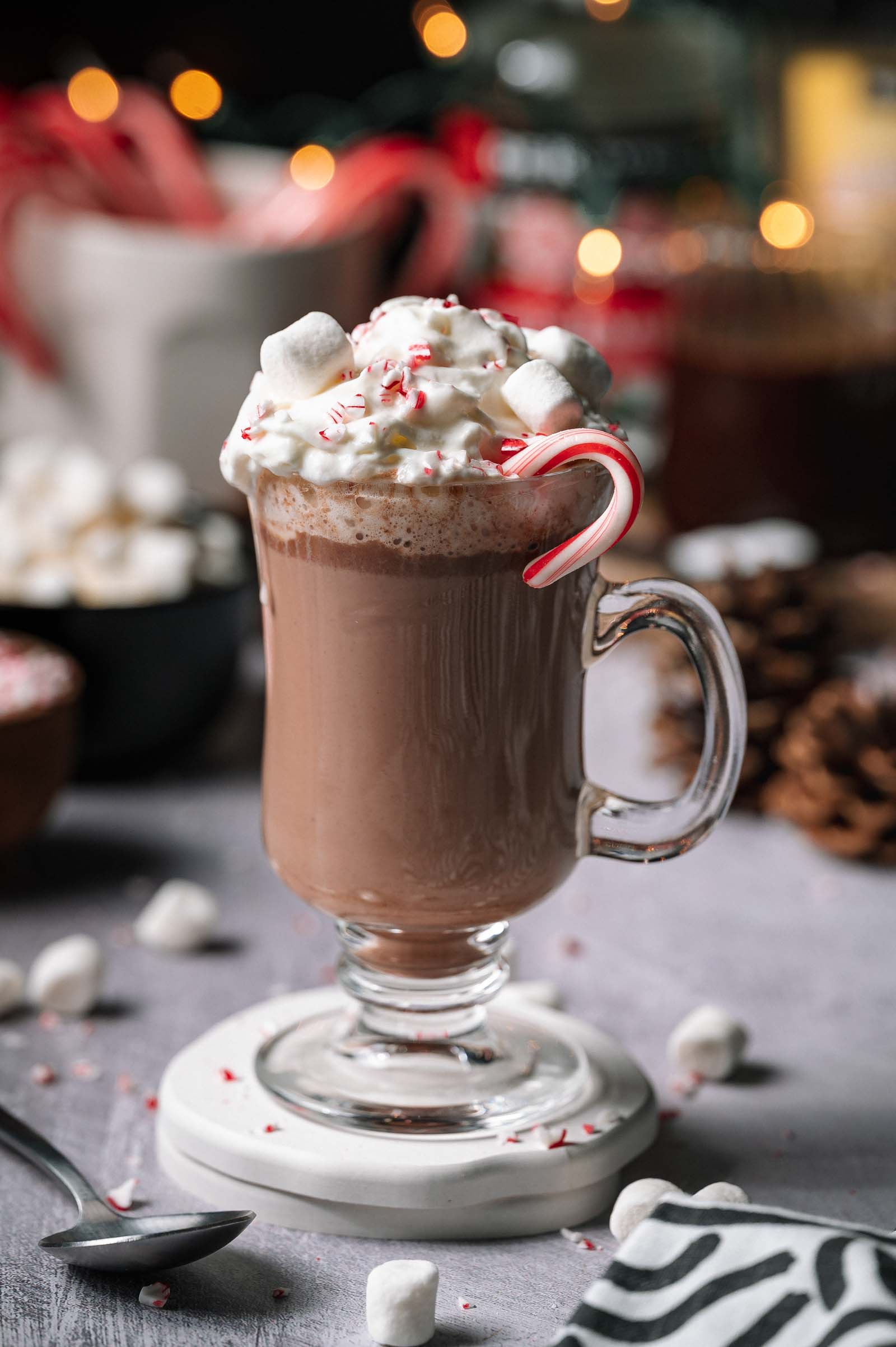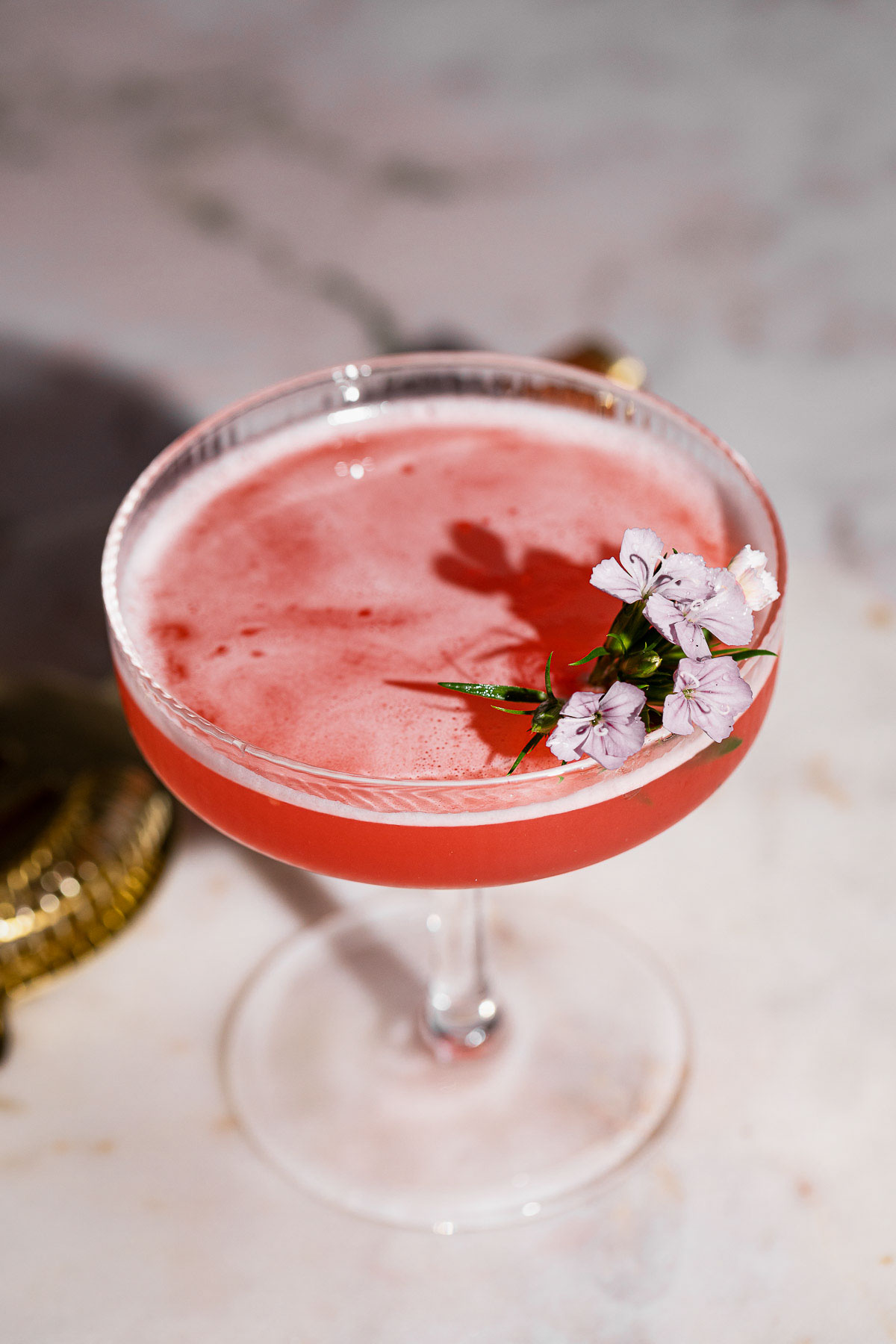You’ve seen it referenced in classic cocktail books, maybe glimpsed it in period films set in dimly lit lounges… the Brandy Crusta occupies a peculiar space in cocktail history.
It’s elegant without being pretentious, complex without demanding apology, and utterly approachable once you understand what makes it tick. If you’ve been searching for a brandy cocktail that feels both refined and genuinely delicious, one that rewards quality spirits without relying on flashy techniques, we’ve got exactly what you need.
The Crusta is proof that sometimes the oldest recipes are the ones that have simply earned their place through sheer merit.
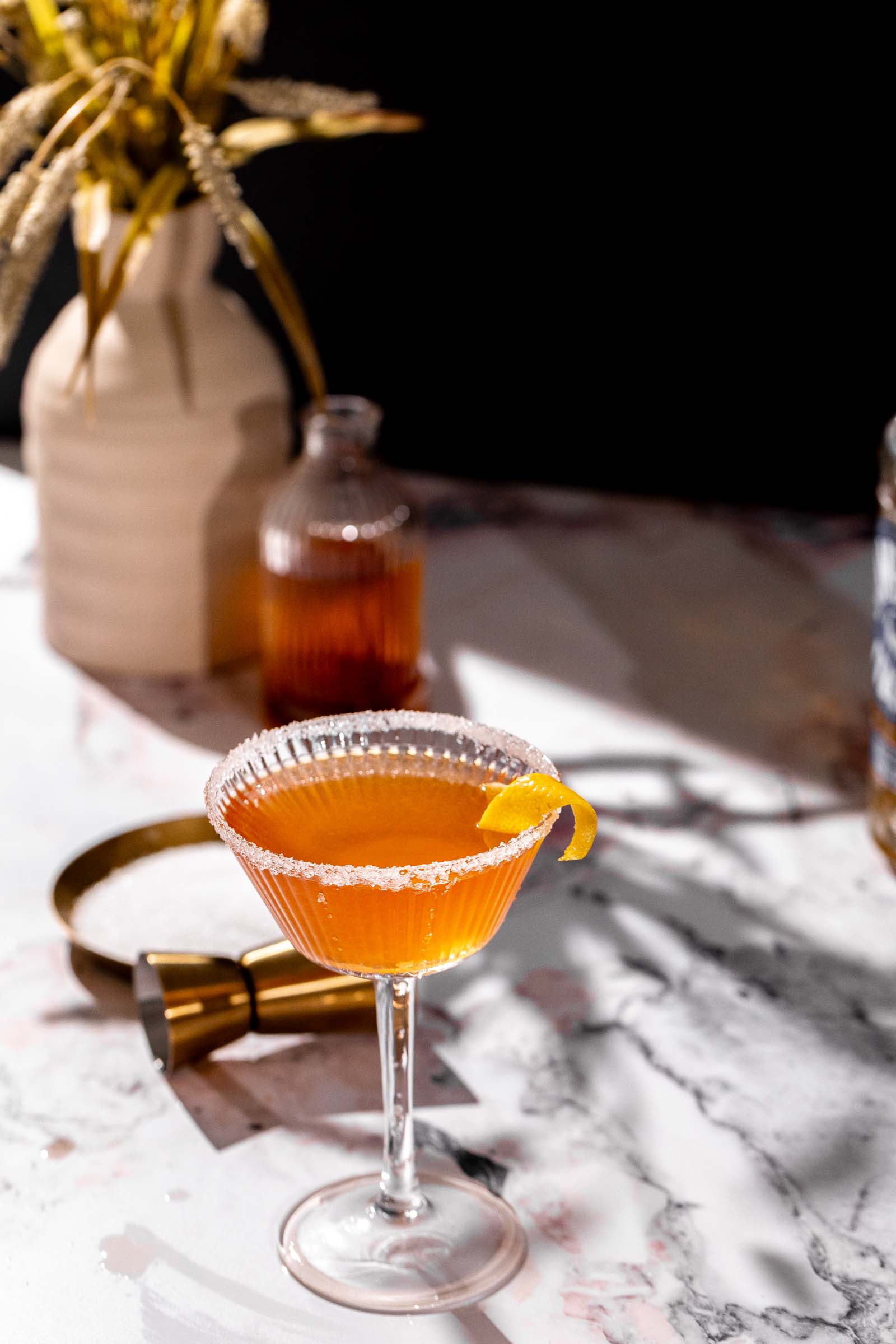
What Is a Brandy Crusta Cocktail?
Quick Answer: The Brandy Crusta is one of the earliest recorded cocktails, first appearing in Jerry Thomas’s 1862 bartender’s guide, making it older than most cocktails have a right to be.
It’s a short, spirit-forward drink built on cognac or brandy, balanced with orange liqueur, maraschino, and fresh lemon juice, with a signature sugar rim that gives it both visual presence and textural contrast. The drink exists in that sweet spot between a Sour and a Sidecar, neither fully committed to being either, which is precisely why it works.
If you love this drink, you’re appreciating the ancestor of New Orleans’ most iconic cocktails. The Crusta’s minimalist approach influenced everything that came after, from the Sidecar to the Vieux Carré
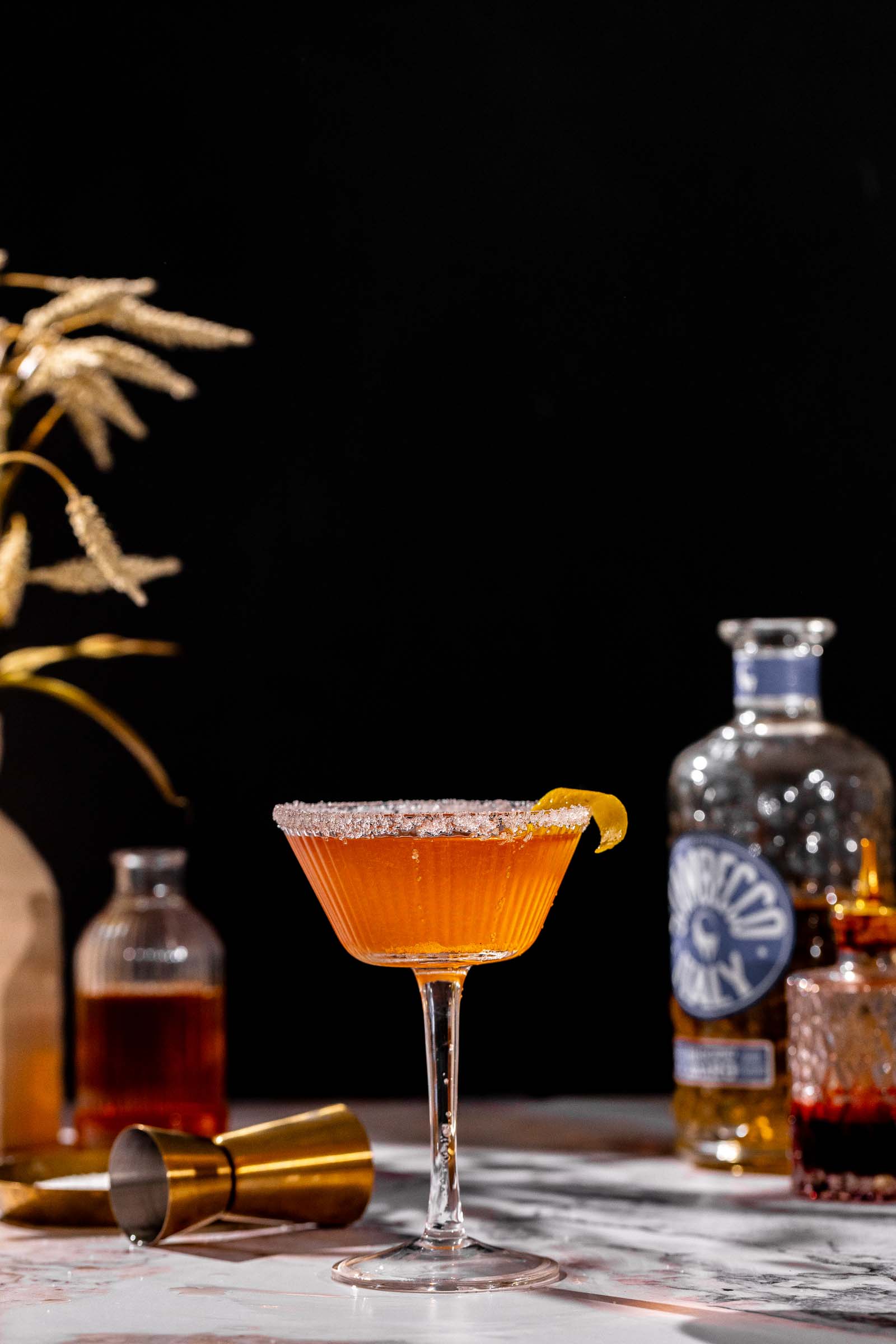
What you’ll love about this recipe:
What You’ll Need to Make a Brandy Crusta Cocktail
How to Make a Brandy Crusta Cocktail
- Take a stemmed glass—a coupe or martini glass works beautifully—and lightly moisten the rim with a damp cloth or the cut side of a lemon. Roll the rim gently in sugar until evenly coated. Set aside.
- Fill your mixing glass with fresh ice. Measure out your brandy, curaçao, maraschino liqueur, lemon juice, and bitters directly into the glass.
- Shake vigorously for about 10 seconds. You want the drink properly chilled and diluted—this isn’t a gentle motion. Commit to it.
- Strain into your prepared glass using a Hawthorne strainer, ensuring no ice chips make it through.
- Express the oils from your lemon peel over the surface of the drink by holding it skin-side-up and giving it a firm twist. Drape the peel around the inside edge of the glass—it should rest naturally against the rim.
Bartender’s Tips
- Temperature Matters More Than You Think: Pre-chill your glass if you have time. A cold drink stays cold, and the sugar rim sets better when the glass is already cold. This isn’t fussy—it’s practical.
- Don’t Skip the Expression: That lemon peel twist isn’t garnish theater. The oils add flavor and aroma that matter. You’ll notice the difference immediately.
- On Cognac Selection: VSOP cognac is the sweet spot for price and quality. Skip the well brandy here—this drink is too clean to mask rough spirits, and the proportions mean every ingredient gets tasted. If cognac isn’t in your budget, a quality French brandy like Armagnac works beautifully.
- Slight Variations Are Welcome: Some prefer an extra ¼ oz of lemon juice for brightness. Others lean toward slightly less maraschino if they find it too herbal. Build your first one as written, then adjust to your palate. That’s how you own a recipe.
- Glassware Flexibility: While a stemmed glass looks correct here, a coupe glass is more practical for most home bars. A small rocks glass works in a pinch—just skip the sugar rim if you prefer simplicity over ceremony.
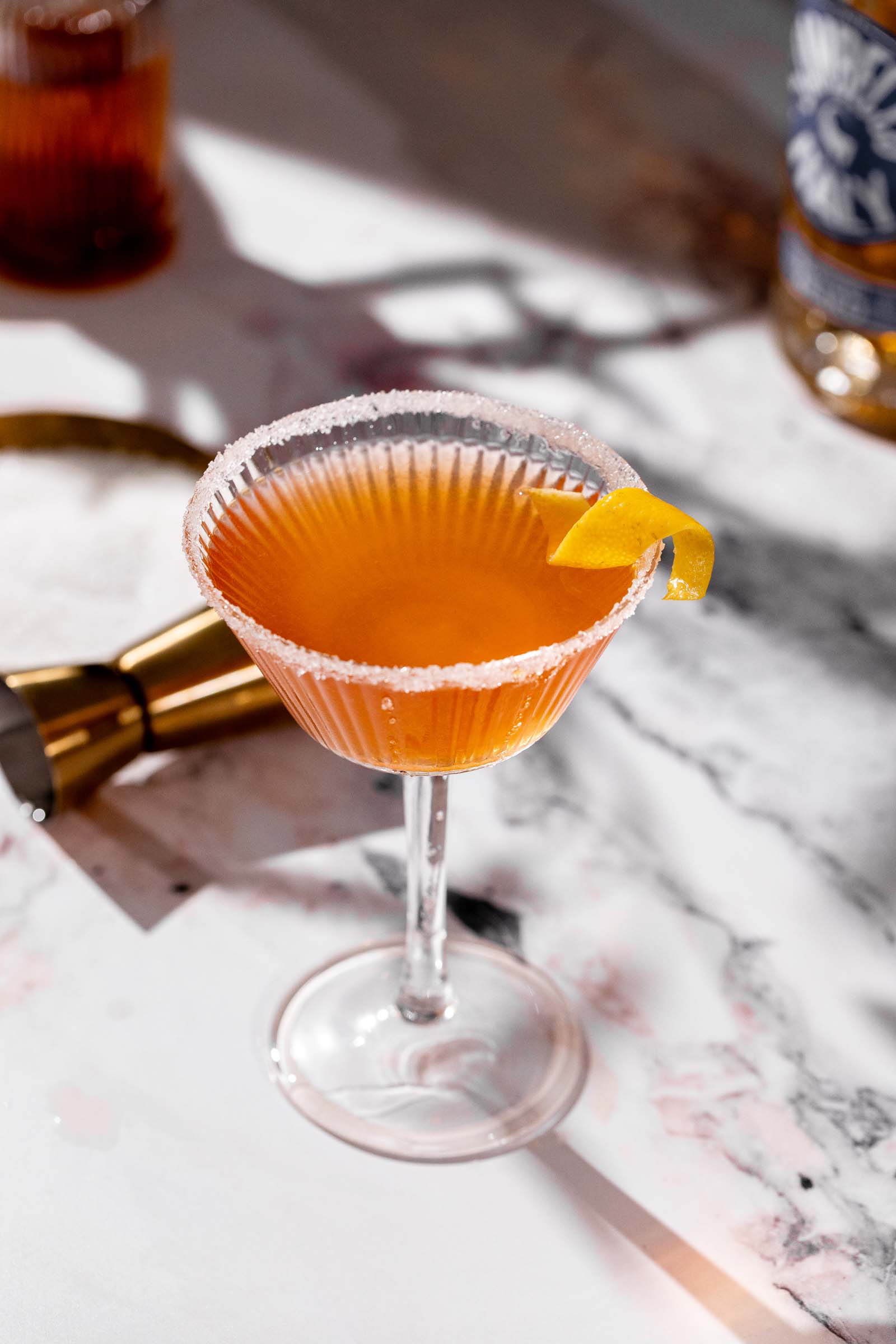
How to Serve This Brandy Crusta Cocktail
Serve this cocktail in a chilled coupe or martini glass—stemware keeps your hand heat away from the drink and shows off that sugar rim. A rocks glass works if that’s what you have, though you’ll lose some visual impact.
This is a drink for the unwinding hour, when you’ve settled in rather than just arrived. Serve it before dinner, not after, the acidity and spirit balance make it an aperitif. The lemon acidity cuts through richness without overwhelming, making it a natural lead-in to a meal. Avoid serving it as an after-dinner drink; it doesn’t have the sweetness or heaviness that typically works post-dinner.
Timing matters: serve it immediately after straining. The dilution from shaking peaks within the first few minutes, then the drink starts to separate and flatten. Don’t let it sit.
Keep the garnish minimal – just that lemon peel draped inside the rim. Extra fruit or herbs will compete with the drink’s balance. The sugar rim is your only decoration; let it do the work.
Temperature is non-negotiable. A warm Crusta tastes thin and one-dimensional. Pre-chill your glass in the freezer for at least 10 minutes before serving, or fill it with ice while you’re building the drink, then empty and strain immediately.
More Cocktail Recipes
Looking to expand your brandy collection? Explore more New Orleans classics: Vieux Carré, Sazerac, or browse our full Brandy Cocktails collection
Brandy Crusta Cocktail Recipe
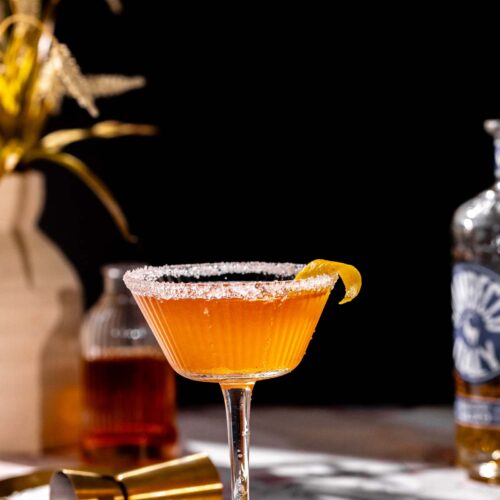
Ingredients
- 2 oz brandy or cognac
- ½ oz curaçao or orange liqueur
- ¼ oz maraschino liqueur
- ¾ oz fresh lemon juice
- 2 dashes Angostura bitters
- Sugar for rimming
- Lemon peel for garnish
Instructions
- Rim a stemmed glass with sugar and set aside.
- In a shaker with ice, combine brandy, curaçao, maraschino liqueur, lemon juice, and bitters.
- Shake well until chilled.
- Strain into the prepared glass.
- Garnish with a long lemon peel draped around the inside of the glass.
Video

Recipe FAQs
Technically, yes… but you’ll lose something important. Maraschino acts as a bridge that prevents the drink from tasting one-dimensional. If you absolutely must skip it, increase the curaçao to ¾ oz and understand the drink will taste different—less nuanced, more straightforward citrus.
Both are brandy-based sours with orange liqueur and lemon juice. The Crusta adds maraschino and bitters, plus the sugar rim, which shifts the flavor profile toward something more complex and balanced. A Sidecar is drier and more citrus-forward; the Crusta is rounder, more herbal.
Yes. Bottled lemon juice will work in an emergency, but the drink noticeably flattens. Fresh juice takes five minutes and makes a real difference – it’s worth the effort.
You can, but…. you’re losing the point. This drink is meant to be spirit-forward and relatively short. Diluting it further with ice will make it taste thin and one-dimensional. Make it once as written, then experiment if you want.
A coupe glass is perfect and arguably more practical. A rocks glass works if that’s all you have. The sugar rim shows better in stemware, but the drink tastes the same in any clean glass.
Want weekly recipes, behind-the-scenes insights, and invitations to our community tasting notes? Join our private Facebook group and subscribe to our email newsletter – new recipes hit your inbox every Friday, right in time for happy hour.

